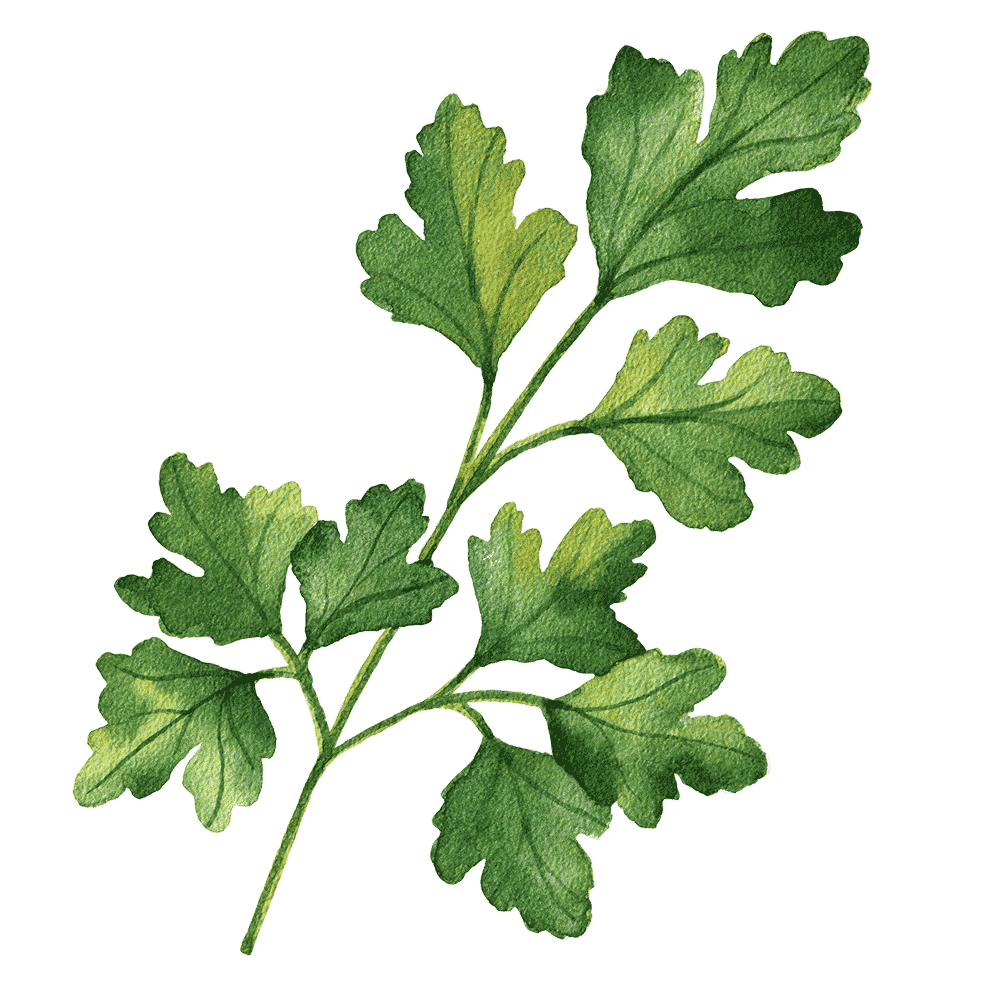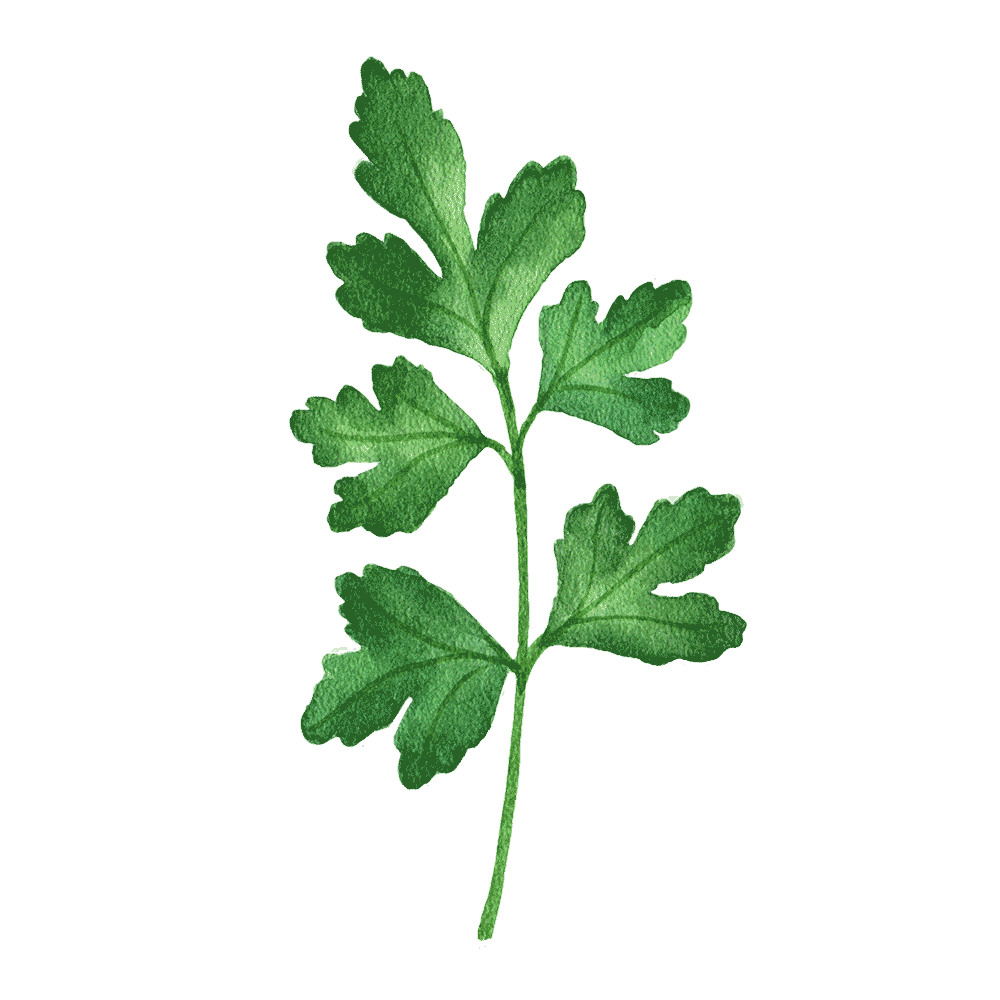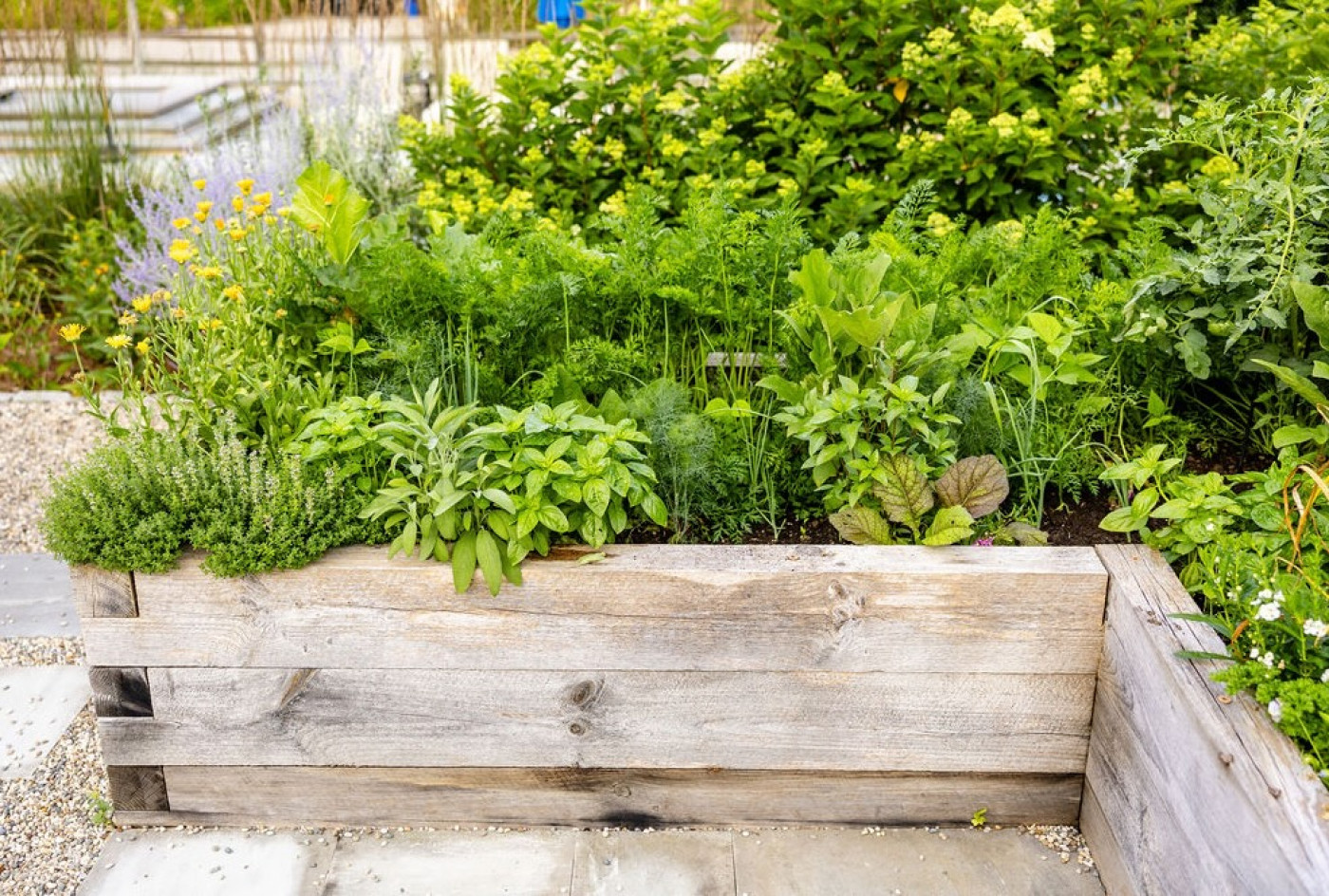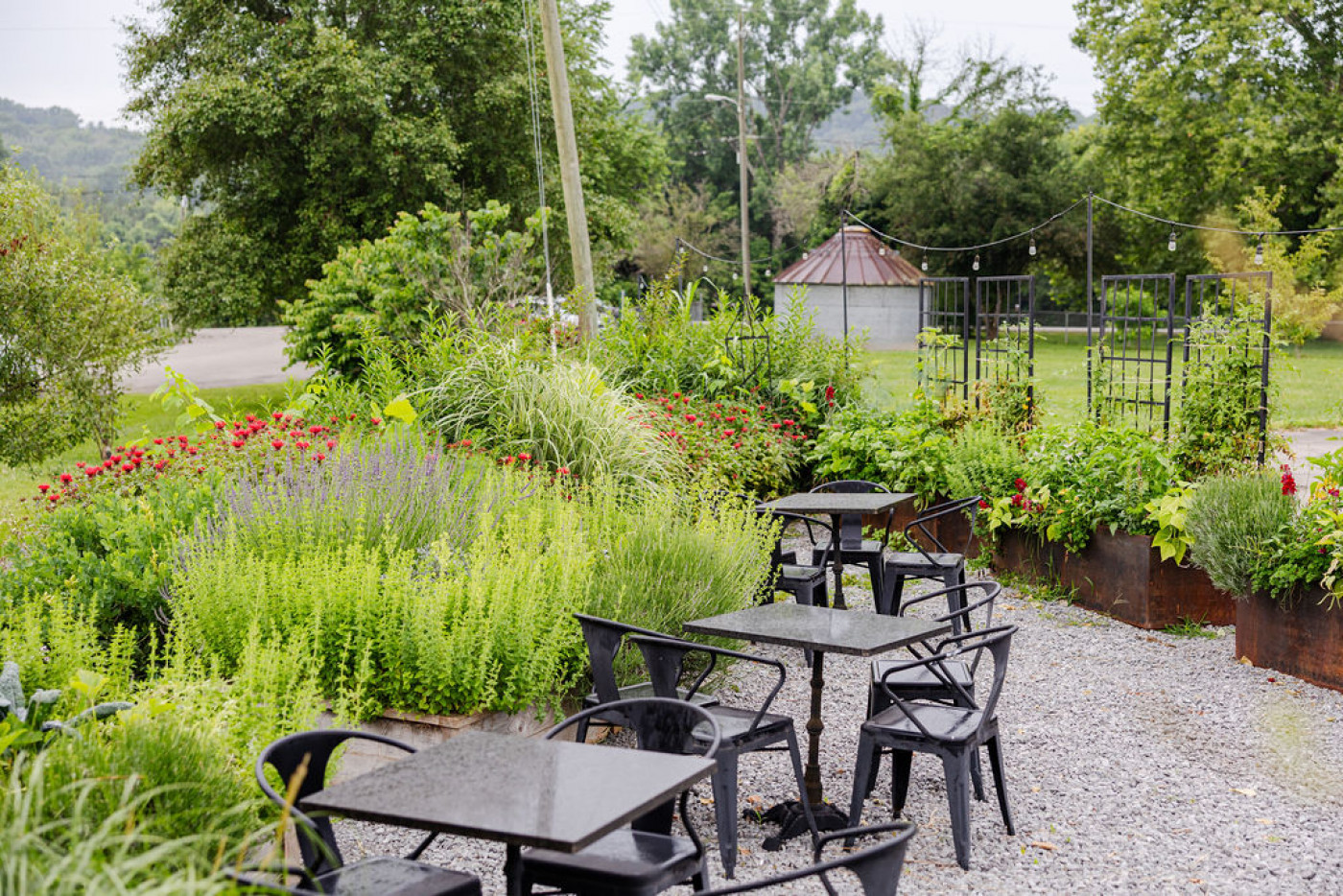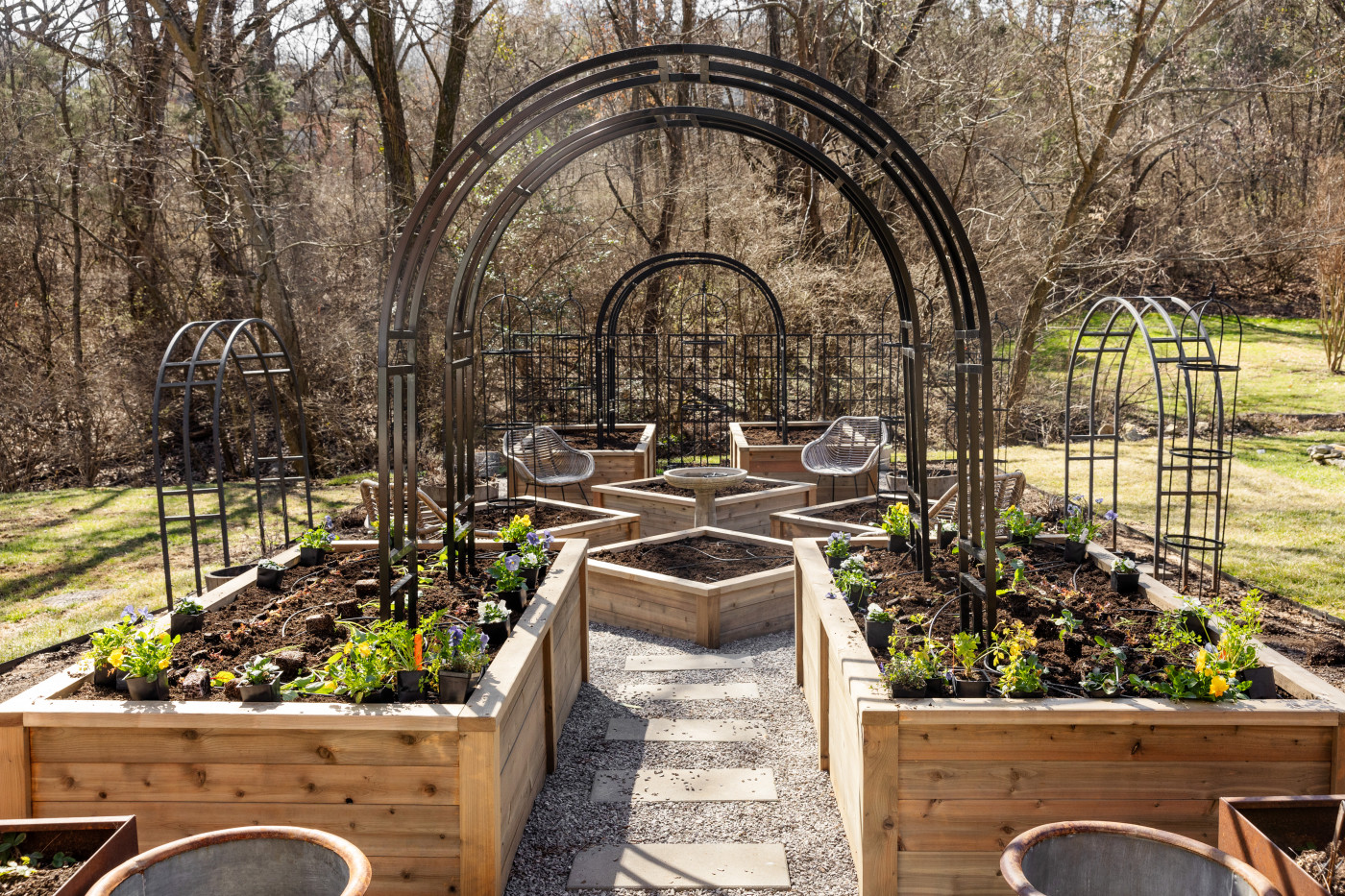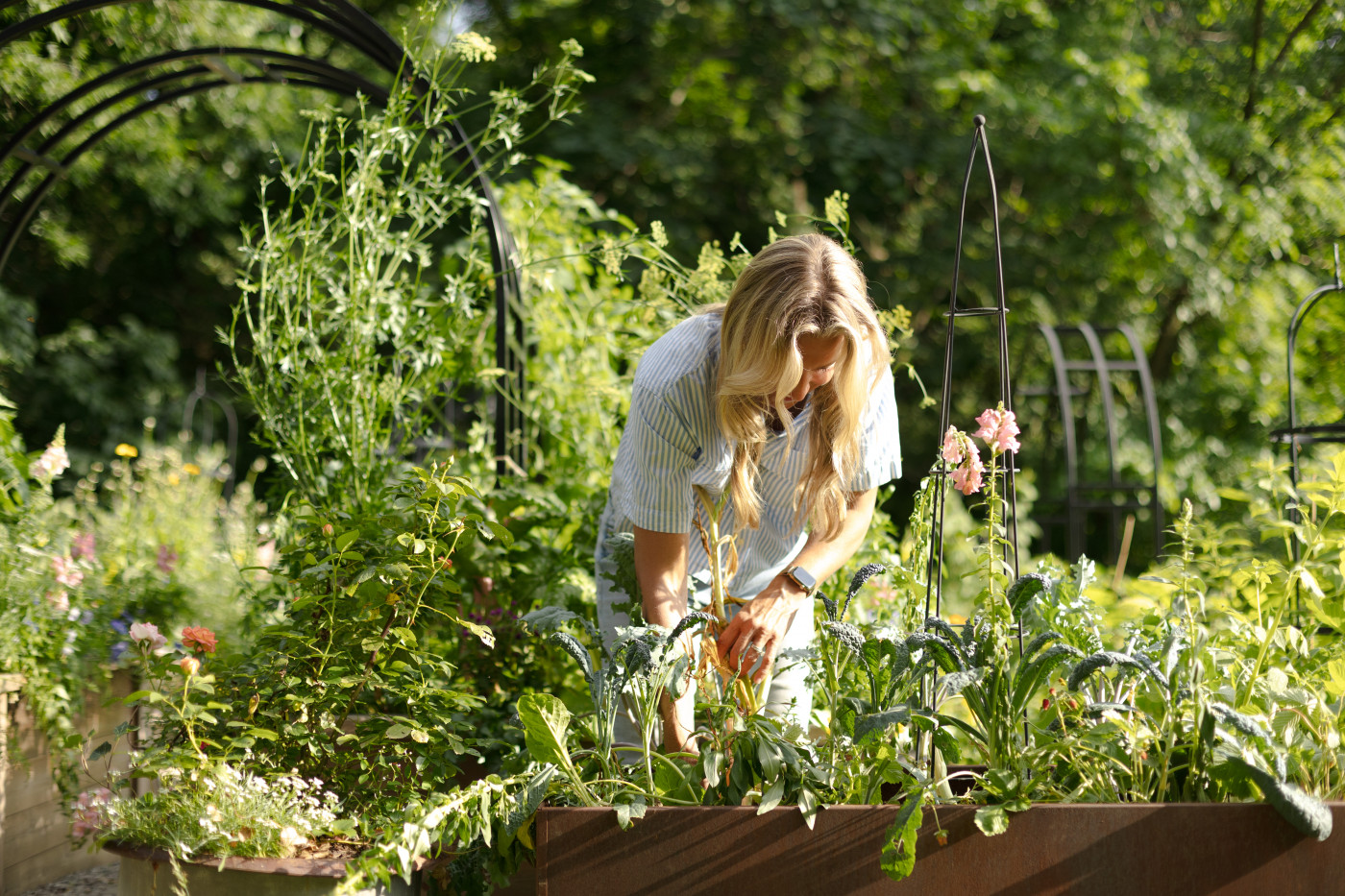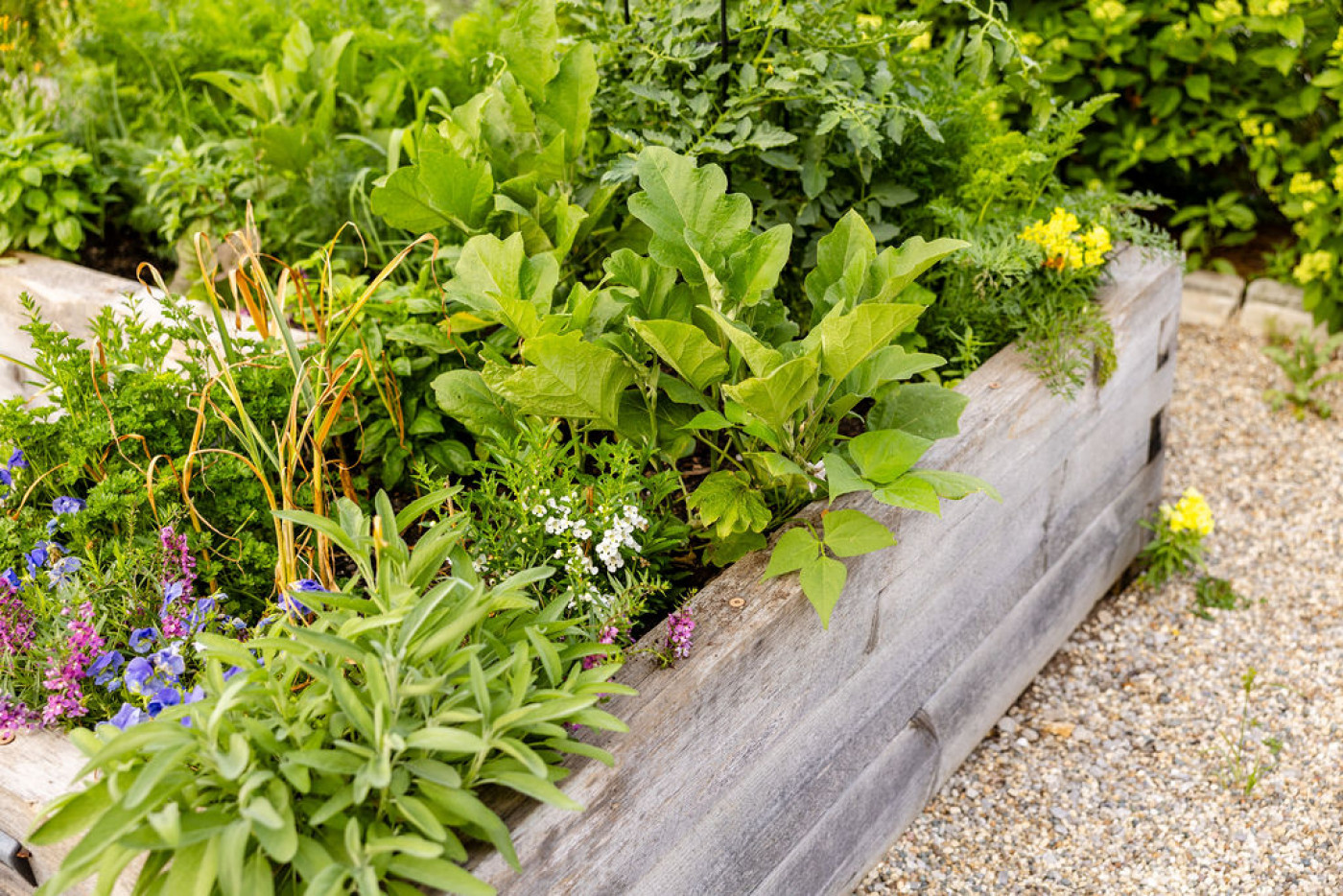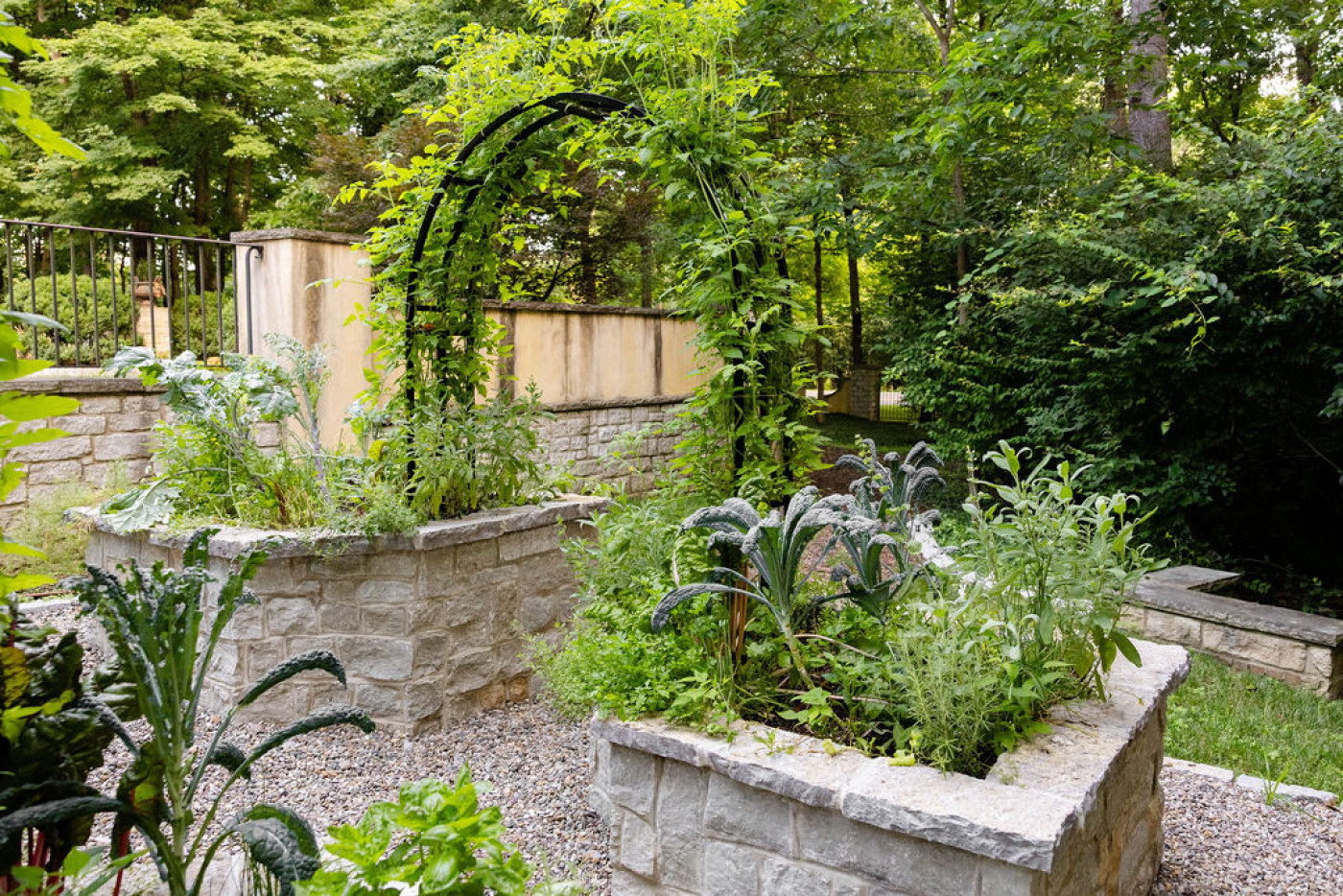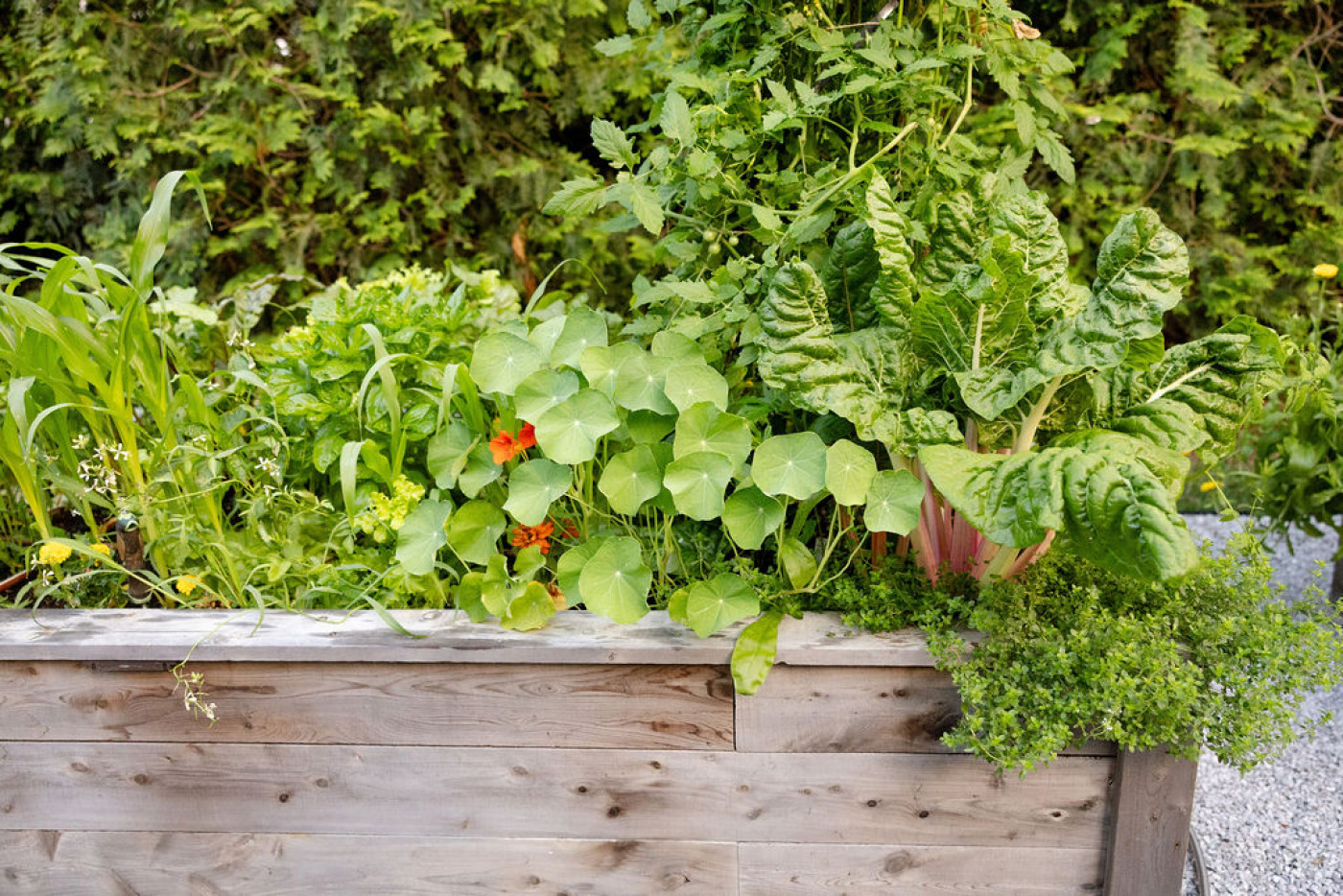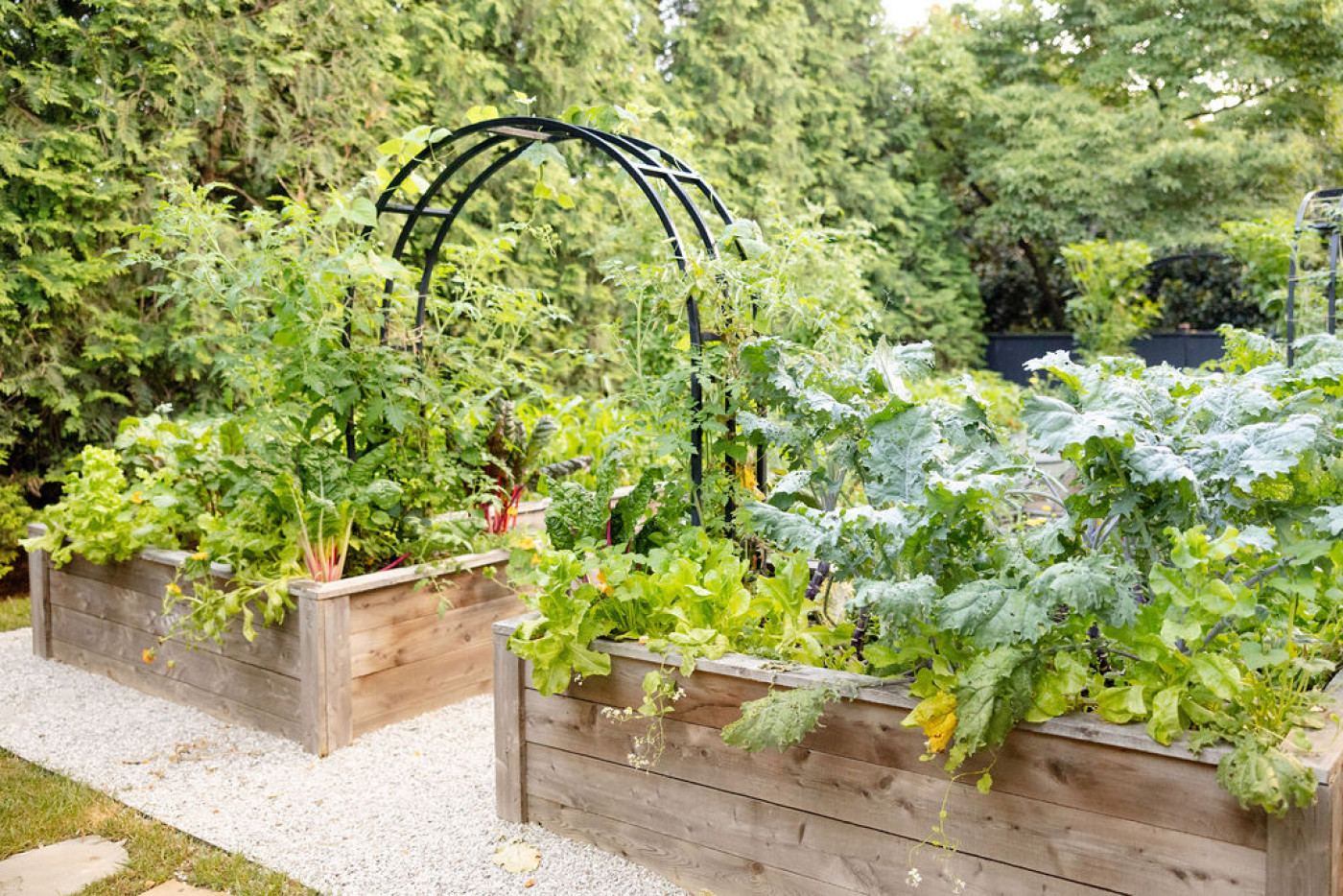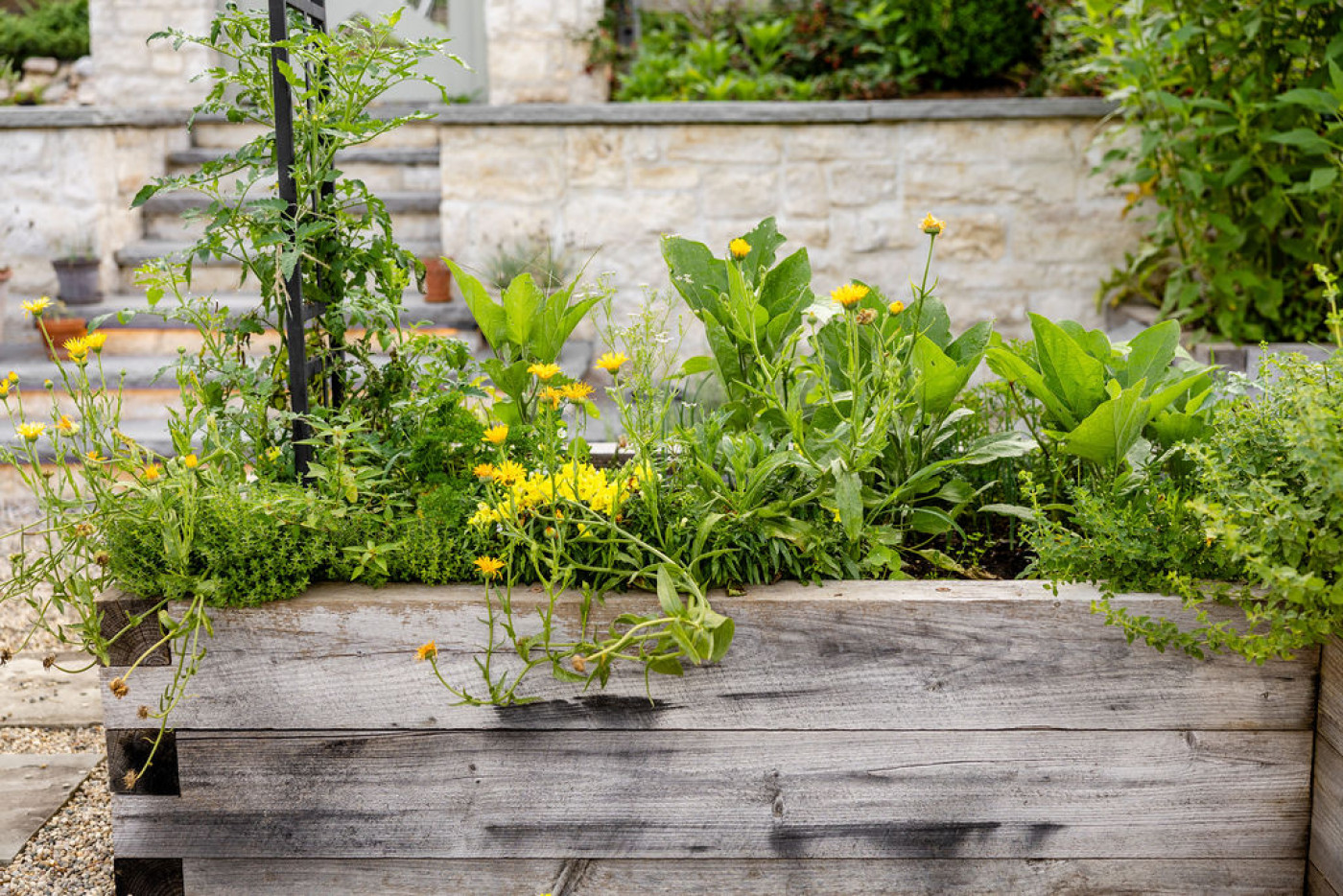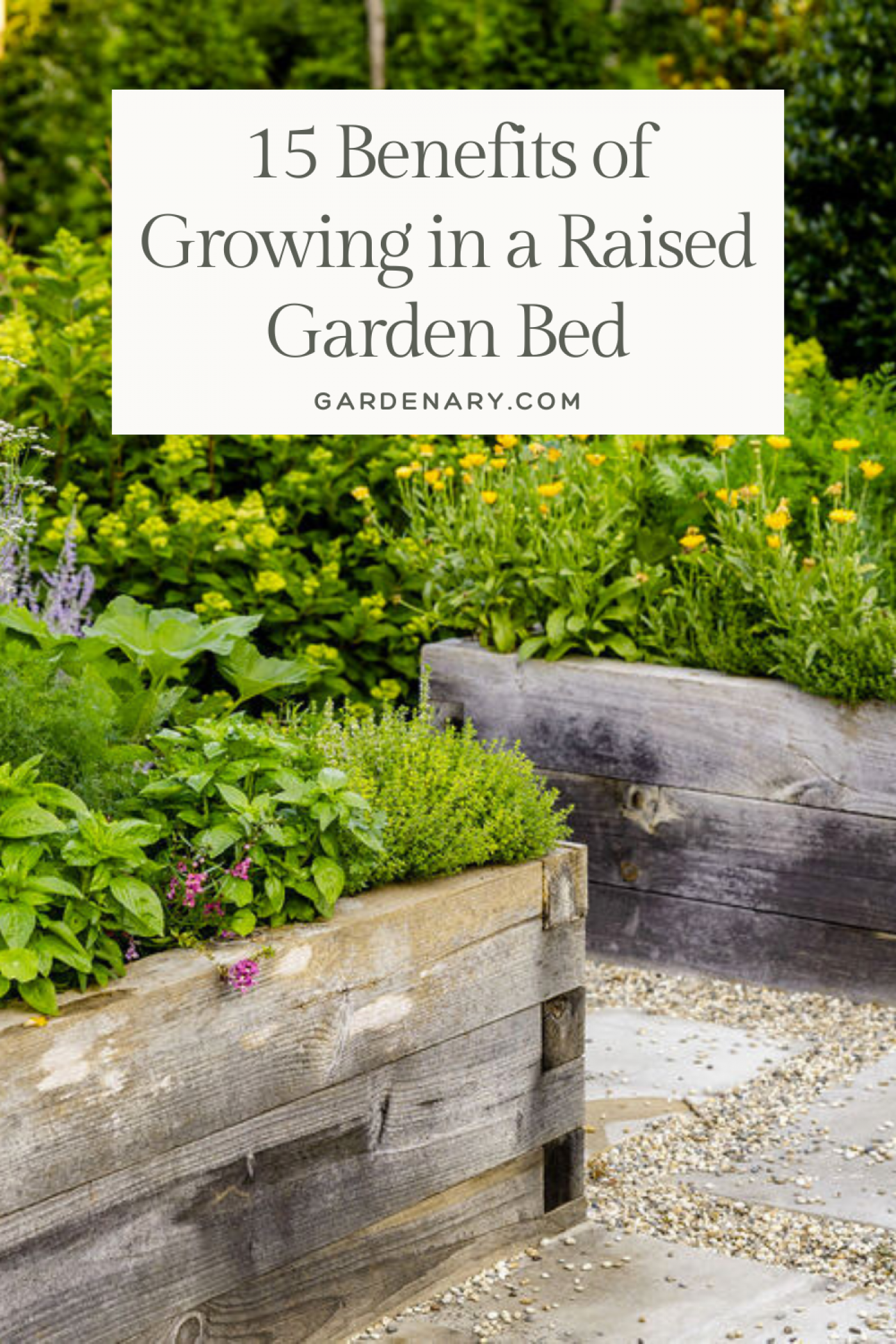Are Raised Beds Really Better Than In-Ground Gardens?
My first vegetable garden was in the ground in a space I prepared with a rototiller. When I finally switched to a raised bed, it was like the difference between night and day.
Over the years, I converted to growing the majority of my herbs, leafy greens, root crops, and fruiting plants in raised beds. I founded a company, Gardenary, that specializes in installing raised-bed kitchen gardens for our clients and teaching our students how to grow in raised beds.
Before you go thinking I'm anti anything but raised beds, let me say that my in-ground pollinator and native plant garden is one of my favorite features of my backyard garden space. In-ground gardens are great for flowers, shrubs, and some edible crops (such as tubers and large melons).
Prefer to Watch?
In my experience, the biggest difference between raised-bed gardens and in-ground gardens is their purpose: the former is ideal for growing plants with delicate roots that are often picky about their soil composition and quality (i.e., most fruiting plants and vegetables), and the latter is ideal for growing everything else.
But when it comes down to things like cost, time, productivity, and actual enjoyment of gardening, are raised beds really all that much better? Keep scrolling to learn what I consider to be the top 15 benefits of growing vegetables in raised beds.
At a Glance
- Raised beds provide better growing conditions for your vegetables by allowing you to start with great soil, improving drainage, and giving roots plenty of space to dig down deep.
- Raised beds are more accessible and easier to tend, especially for gardeners with mobility issues. They also require less maintenance because they prevent weeds and pest issues.
- Raised beds extend your overall growing season and increase your production.
Before we get into the benefits, let's make sure we're on the same page about what these different garden types mean:
In-Ground Gardens
This type of garden is created by growing straight in the native soil or by modifying existing soil through tilling and amending with organic matter such as compost. In-ground beds are a planting area distinct from the rest of the yard. For larger fruiting plants, in-ground gardens should be planted in a row-garden style.
Raised Beds
Raised beds are structures with four walls to contain soil and plants. While most raised beds have no bottom, some are enclosed so that you can add wheels or raise them off of the ground for greater mobility and accessibility. Raised beds with bottoms are technically containers, but we're going to include them here because they offer the same benefits as raised beds as long as they're deep enough to give the plants' roots plenty of room.
Benefits of Raised Beds
#1 Raised Beds Are Ready to Grow in Right Away
Both raised beds and in-ground gardens require some time to set up. No matter what, you'll need to perform the arduous tasks of removing all the grass and weeds growing there and leveling the area.
For an in-ground garden, you'll need heavy machinery or a lot of muscle to prepare the soil and remove any rocks and debris. Then, you'll need to amend the soil with things like compost, aged manure, or leaf mold. Otherwise, you'll spend two to three years building the soil by using cover crops in the off season and slowly adding humus to the top soil layer.
It also takes some time to build a raised bed, clear the space, and install soil, but the good news is that the bed is ready to grow in right away. Raised beds typically require a few hours to a few days to set up, depending on the size of the space.
If you're setting a raised bed container on top of a gravel or concrete surface, you can just put the container right on top, fill it with soil, and you're ready to grow. I love that speed for people who want to get their gardens set up really quickly.
#2 Raised Beds Require Much Less Weeding
Weeds are a major issue for in-ground gardens, even if you use the lasagna gardening method to suppress weed growth before planting.
Weeding has always been one of my least-favorite gardening tasks. I've found that raised beds significantly reduce the time I have to spend weeding. The fresh, weed-free soil inside a raised bed means no weed seeds are already present, and the tall walls of a raised bed act as a barrier to prevent weeds from creeping in. I lay gravel over my entire garden area and line the bottom of my raised beds with weed barrier cloth, cardboard, or X-Board to prevent weeds from growing up underneath.
The wind will carry the occasional weed seed into my raised beds, but they are easy to take care of and often suppressed by the lush plant growth in the raised beds. (Check out this article on intensive planting to learn more about how you can plant your raised beds in a way that deters weed growth.)


#3 Raised Beds Help with Pest Control
New gardens often become the hottest spot in town for pests of all sizes, and gardening in the ground means you have way less control over which critters can access your garden (unless you build a fence around your entire plot). Rats, rabbits, gophers, groundhogs, deer, and insects, particularly soil-borne pests, have much easier access to in-ground gardens.
For those of you with dogs, you might find that your canine companion is the worst garden pest imaginable when it comes to an in-ground bed. I can't tell you how many tender young plants my dogs have trampled in my in-ground pollinator garden. (The same goes for my children when they were small.)
But with a raised bed, the height of the bed itself serves as an extra layer of defense against garden pests, including slugs, snails, and even rabbits. Other pests, such as birds, squirrels, and cats, can be deterred with the addition of a floating row cover or garden mesh. These physical barriers are much easier to install in raised beds than on the ground.
If you live somewhere with pests that attack from below—such as gophers, moles, voles, and even armadillos—there's a simple solution to keep them out of raised beds: Line the bottom of your raised beds with hardware cloth, and these destructive little critters won't be able to dig up your veggies.
#4 Raised Beds Allow You to Start with Nutrient-Dense Soil
I've gardened in a lot of different places, but none of these locations had native soil that would keep vegetables happy and healthy. The soil in my yard has often been too rocky or filled with too much clay. I also can't guarantee that the soil hasn't been treated with herbicides or pesticides that I don't want my edible plants absorbing.
If I had wanted to grow annual plants in the ground, I would have spent several seasons amending the soil in the ground to get the right composition for growing vegetables (and that soil might still be filled with synthetic stuff I don't want to eat).
Unless you scoop up your native topsoil and it has the ideal composition and structure for the tender roots of annual plants, it's probably not ideal for growing carrots, radishes, kale, tomatoes, peppers, or lettuce plants.
With a raised bed, you get to start with the best soil, leading to success in your garden much faster. You control the quality, pH, texture and organic nature of what fills your raised beds. You can create the ideal sandy loam mix rich in organic matter that will absorb water, support roots, drain well, and ensure your plants thrive.
Download My Soil Recipe
Ready to grow stronger, healthier plants with less guesswork and more harvests? My Secret Soil Recipe reveals the exact mix I use to build rich, living soil.

#5 Raised Beds Provide Better Drainage Than In-Ground Gardens
Raised beds filled with the right type of soil drain more quickly than in-ground beds.
Many of the edible plants you might want to grow in a kitchen garden—cabbages, radishes, kale, peas, etc.—like to be watered frequently but hate to have their roots wet for too long. In-ground plants are more likely to sit in water because you have no control over the drainage, so you risk battling mold, rot, and mildew. Poor drainage can even just prevent your plants from flourishing. This is especially true in areas with clay-heavy soil.
In a raised bed, gravity works in our favor to keep those roots happy. In other words, the elevation of the bed itself facilitates faster draining. This is especially important to consider if you live in a wet climate. I first started installing raised beds in Houston, Texas, where flooding is a major concern. Raised beds help to protect your plants during heavy rains.
Pro Tip:
If you're setting up an in-ground garden, be sure to select plants that thrive in wet or dry conditions, depending on your climate.
Shop Our Cedar Raised Beds
Gardenary's new line of quality cedar garden beds are easy to assemble and will provide years of gardening enjoyment. Choose from numerous different garden sizes to fit your space.
#6 Raised Beds Are Easier to Tend Than In-Ground Gardens
Tending plants that are growing in the ground can be hard and dirty work (especially if there's mud). There's a lot of crouching, kneeling, and squatting—you're going to feel it more in your body. But you know what they say: gardening definitely counts as your cardio.
While I love my in-ground pollinator garden, it's much more difficult to tend those plants and work the soil there than in my raised beds. (Fortunately, the plants growing in my pollinator garden are natives and wildflowers that don't need much from me.)
There's no need to pull on your work boots to tend your raised-bed garden. The plants growing there will be level with your knees or even hands, so you won't have to bend from the waist much to tend or harvest. If you have any kind of injury or disability, you'll find that even an extra foot or two of height can really make a difference in your ability to work in and enjoy the space. For older gardeners, raised beds can save your knees and your back.
My raised beds are 2 feet tall with trim around the top. That trim makes the perfect little ledge for me to sit on while I'm tending and planting.
Comfort, ease, and overall accessibility are important factors to keep you coming out to tend and enjoy your garden regularly.(You can still get a good workout gardening in raised beds, but it's nothing compared to an in-ground garden.)
#7 Raised Beds Don't Require Large Tools
The soil in your raised beds will stay looser than your in-ground soil, which means you really don't need large tools to plant, perform maintenance, or remove spent plant material. Definitely no farming equipment required.
You can just grab a couple of simple hand tools, such as a hori hori, a pair of pruners, and a hand rake, plus a little harvest bowl, and you're ready to garden.
→ Learn more about my favorite kitchen gardening tools.
#8 Raised Beds Extend Your Growing Seasons
The soil in a raised bed warms up faster in the spring than the soil in the ground, which means you can start planting earlier. This really made a difference when I lived in Chicago. If I shoveled snow off each bed, then I could work the top 3 or 4 inches of soil enough to plant by late February. I couldn't even get a shovel past the first inch of snow in my in-ground garden until well into March.
In the fall, you can use frost cloth, plastic sheeting, or low tunnels to keep your soil warm and protect your plants past your first frost date. That means you can keep on harvesting well into late fall. You could even add cold frames (aka mini greenhouses) to allow for winter growing.
Getting to plant earlier and grow longer in a raised bed means you have so much more time for gardening each year. You could be harvesting your first leaves in the spring while your neighbors are still waiting for the ground to thaw. You could be pulling up carrots for a Thanksgiving side dish long after your neighbors have closed their gardens down for winter.
#9 Raised Beds Give Roots More Room
When they're growing in a raised bed, the tender roots of your vegetable plants have all the room they need to burrow deep and form a strong foundation for the plant. Giving roots more vertical room means you can fit more plants in a small space because their roots don't need to spread horizontally the way they would if they were planted in the ground.
In an in-ground garden, your plants' root growth can be limited by poor soil structure and large rocks. Their roots will spread out closer to the surface of the soil, which means you'll need to give plants plenty of space to sprawl.
The added root depth (and the rock-free soil) is especially important if you want to grow root crops like carrots.
→ Learn more about how deep your raised beds should be.


#10 Raised Beds Maximize Your Space
Most of us don't have acres and acres of land. We want to be able to grow a little bit of our own food in whatever outdoor space we have, and raised beds allow you to do just that.
I like to compare an in-ground garden to a suburb, where there's room to sprawl. Suburban houses are typically just one to two stories tall because they have all that available land to take up.
But in the middle of a city, you have to build up instead of out. This is why we add trellises to our raised beds for maximum vertical growing space for vining crops. If these crops were growing in the ground, they would need lots of room to themselves to maintain airflow and overall plant health. But giving their roots plenty of room in the raised bed and then training their vines up a trellis means you can grow them in a way that takes up hardly any space horizontally.
If you have multiple raised beds, you could even install an arch trellis that joins two beds. Now you've added even more vertical growing space for plants like pole beans, tomatoes, and cucumbers to grow over the walkway. That means more food production, harvests right at your eye level, and lots of visual interest in your garden space.
#11 Raised Beds Are More Versatile/Movable
Raised beds can be placed on apartment balconies, patios, and rooftop decks. They can also be used to level ground that's too sloped for an in-ground bed.
Your garden's location is, therefore, not limited by where you already have level grass or soil. You can even build your own moveable raised bed by installing casters to a steel bed with a closed bottom. If you can roll your raised bed, then you can easily adapt the lighting situation based on your plants' needs. You definitely can't do that with plants stuck in the ground!
When you're choosing a location for an in-ground garden, you're limited to a location that has both available soil and decent sunlight. That can be pretty difficult in more urban areas.
→ Learn more about installing raised beds on a slope.
#12 You Don't Have to Water As Much
Overall, watering an enclosed space like a raised bed is less wasteful than irrigating an in-ground space. You can install a simple drip irrigation system to deliver water right to the roots of your plants. This uses the precious resource that is water efficiently and even saves you money on your water bills.
Also, if you have sandy native soil, then your raised beds will have much better water retention than in-ground beds.
If you plant your raised beds intensively, you can further reduce the need for watering because the leaves of your plants will shade the soil, which helps to maintain moisture.
→ Learn more ways to reduce the cost of watering your garden.
#13 Raised Beds Are Beautiful Structures Even When Nothing's Growing
Even without plants, raised beds are a beautiful fixture in your landscape in their own right. In Chicago, I could see my raised beds and beautiful arch trellises even in the middle of the winter, when my in-ground pollinator garden was buried under snow.
Plus, there's a raised bed material to fit every style of home (and personality), and it's often easier to keep raised beds looking neat and tidy than in-ground garden beds.
Don't get me wrong—I also love the beauty of my pollinator garden in bloom. But there's just something about raised beds that make a garden look so much tidier and more beautiful.
#14 Raised Beds Increase Your Garden's Overall Production
Productivity matters, even if your goal isn't to replace all of your grocery store trips with produce from your garden. Production in a raised bed increases due to better depth for roots, soil quality, drainage, vertical elements like trellises, and soil temperature. Plus, you get this production without the time and physical effort involved with row gardening.
Let's face it: if your garden is not an attractive, easy-to-access space that's also producing something you can tend or harvest continuously, you'll simply lose interest in being there. Our goal is to create a space that you want to visit every day.


The 5-Minute Gardener
Nurture a year-round gardening habit with just 5 minutes a day, from the author of Kitchen Garden Revival and Leaves, Roots & Fruit.
#15 Raised Beds Minimize Soil Compaction
Stepping on your garden is one of the main causes of soil depletion each year. The raised bed structure protects your soil from foot traffic, especially from children and pets.
You'll also have less soil erosion. The soil in your raised beds will sink throughout the growing season, but you won't be losing that top layer, which is often filled with nutrients, to wind and runoff like you would in an in-ground bed.
Because your soil stays nice and protected, it's easier to refresh your soil before planting. Each season, I simply clear the surface of any debris and add a fresh layer of compost. No tilling involved.
Raised beds have the added benefit of preventing dogs, children, and careless adults from stepping on your veggies.
The One Negative...
Raised Beds Are Typically More Expensive to Set Up Than In-Ground Gardens
Setting up an in-ground garden can be considerably cheaper than installing raised beds. After all, your growing space is the ground you already have and your growing medium is, more or less, the native soil.
While that means you'll need way fewer materials to create your in-ground garden, you will likely still need to rent or purchase some large tools to prepare the soil for planting and buy some soil amendments.
Cost to Set Up In-Ground Garden
To prepare an in-ground garden, you may need to purchase or rent the following:
- A rototiller to loosen the soil 6 to 12 inches down
- A sod cutter to remove grass
- Other machinery to clear and prepare the soil
- Weed barrier cloth or other weed suppressant
- A rake or hoe to level the soil
You can start amending your soil for pretty cheap if you have access to compost or leaf mold. Otherwise, you'll need to buy some amendments to help you build better soil over time. In most places, the native soil is not ideal for growing annual vegetables. Again, these plants have tender roots that struggle to break through compacted soil and need more drainage than clay-heavy soil can provide.
When all is said and done, you should be able to set up at least 100 square feet of growing space for under $1,000 (if not significantly less than that).
Cost to Set Up a Raised-Bed Garden
Raised beds require you to purchase the material to contain the soil, the hardware to hold it all together, and a large amount of soil to fill the interior. If you're putting together more than one raised bed, the cost for those materials can add up quickly.
The Raised Beds
To build a raised bed, you'll need to purchase:
- Raised bed materials (e.g., cedar boards, bricks, steel siding, etc.)
- Bed hardware (e.g., framing angles, screws, washers, nuts)
- Sod cutter or other equipment to clear the space
Though it'll depend on the raised bed material you're using, you're likely going to spend at least $125 per bed. (I don't recommend purchasing cheap raised bed kits available online because they're often made of too-thin wood that will rot in a matter of years.) The hardware to assemble the material is typically upwards of $15.
Depending on your building material, you may need to replace your raised beds over time. Steel will last decades and stone a lifetime, but wood will eventually degrade or rot.


Pathways
To ensure your raised beds are easy to access and to increase the durability of wooden raised beds, I recommend setting your beds on some kind of garden path. (Learn more about different types of pathways.) I use gravel in all of my raised bed designs to help with drainage in the garden and to level the beds. Keep in mind that gravel or a substitute is another expense you should factor into your raised-bud budget if you're not putting your beds on concrete, brick, or stone.
Soil
Once your bed is installed, you'll need to fill it with soil. While you can use topsoil from your yard, I recommend generously amending it with compost and coarse sand, if not starting fresh all together. You might be able to cut costs by ordering local soil and compost in bulk.
While raised beds involve way more up-front costs, I personally think that the increased productivity and convenience make them a wise investment in your gardening experience. You can always add raised beds to your space in stages to spread out the costs a bit.
Kitchen Garden Revival
Kitchen Garden Revival is your invitation to ditch the messy, high-maintenance veggie patch and step into a new way of gardening, one that’s elegant, organized, and endlessly rewarding.

FAQs About Raised Beds vs In-Ground Gardens
What are the disadvantages of raised garden beds?
Raised beds offer a more accessible, beginner-friendly way to grow most edible plants, particularly annual veggies. That being said, the main disadvantage is the initial cost to install raised beds and fill them with high-quality soil. I typically advise budgeting about $35 per square foot if you're installing a raised-bed garden yourself.
The less money you spend on the garden itself, the more money you have to spend on plants, seeds, and high-quality soil amendments like worm castings. If you install an in-ground garden and have a great gardening season (let's say there are no significant pest problems or bad weather), then you could get way more for your money than you would with raised beds.
When should you not used raised beds?
If you just want to grow trees, shrubs, flowers, or native plants, you don't really need to worry about raised beds. These guys are much less picky about the soil composition and quality than edible plants. Zinnias, coneflowers, black-eyed Susans, and many more flowers are perfectly happy growing in the ground—some even prefer poor soil. Your existing topsoil should work just fine.
Do vegetables grow better in raised beds?
Many of my clients find growing vegetables to be much easier in raised beds. Once you're set up with a raised bed filled with nutrient-dense soil, your plants require minimal weekly tending to stay healthy and productive. The bed will provide good drainage and nutrients for your plants. You shouldn't have to weed or deal with as many pests. You can even plant your garden in a way that minimizes the need for supplemental watering. Overall, raised beds are a very beginner-friendly setup.
What should you not grow in a raised garden bed?
Not every crop needs to be grown in a raised bed. Some plants grow too large for raised beds, while others spread too aggressively. Perennial plants like asparagus are also best grown in the ground. The list of plants I don't recommend growing in raised garden beds includes potatoes, rhubarb, corn, fruit trees, berries, and mint.
Grow with Gardenary!
You can create a beautiful space that you'll absolutely love in your yard whether you're planting in the ground or in raised beds. But, if you're looking to have lots of success growing fruiting plants and vegetables in a space that's as productive as it is visually appealing, I do recommend going with some raised beds. I'm confident you'll love your space as much as I do!
For more information on how to design and install raised beds and then fill them with the best soil and plants, grab a copy of my book, Kitchen Garden Revival. Consider it your guide to setting up a modern and stylish vegetable garden.
For a little more hands-on guidance, search our business directory for a garden coach near you. A Gardenary-trained garden coach can come out to your space and help you determine which type of bed is best for you.
We also have an online course called Kitchen Garden Academy to help you set up a DIY garden just like professional would. You'll find community support and tons of resources to help you get growing!
Thanks for helping me bring back the kitchen garden, no matter where you're growing!
